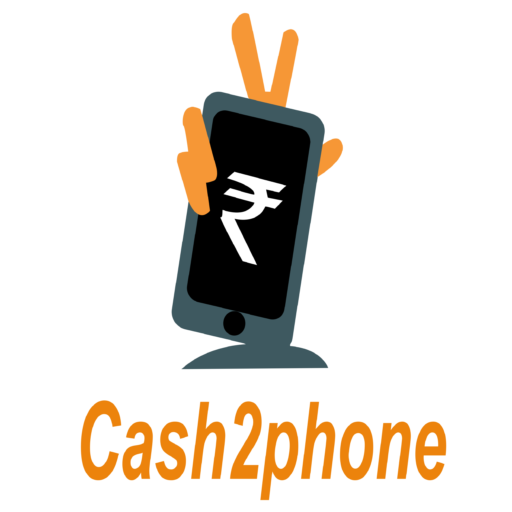Imagine a world where all your devices at home, from your thermostat to your fridge, can talk to each other and make your life easier. That is what the Internet of Things (IoT) is all about. It is like having a super-smart assistant that helps you connect the dots in your daily life, making things smoother and simpler. In this blog post, we will dive into how Internet of things ; technology is changing our lives and show you how it links all the pieces together.
The Internet of Things is a collection of sensors and devices connected to the Internet that transmit sensor data directly into cloud systems through wired (Ethernet) or wireless (Wi-Fi, cellular) networks.
IoT systems can provide valuable information for many uses depending on their environment, from monitoring granular environmental conditions in agriculture, enhancing factory operations and customer experiences in retail environments, and monitoring global climate conditions in space exploration environments.
Introduction to IoT
The Internet of Things (IoT) is an expanding network of connected devices connected to the Internet that collect and transmit data. Simply put, this unites the physical and digital worlds into one huge information source and automation system capable of making almost any object intelligent.
IoT sensor-based systems communicate and share data over networks powered by the Internet, Wi-Fi, Bluetooth, Zigbee or hardwiring via unique identifiers. Applications designed specifically to handle IoT data then transform this machine-generated information into actionable insights that benefit users or systems – taking machine-generated information and turning it into knowledge.
IoT technologies are revolutionizing our daily lives by automating tasks and increasing efficiency. At home, this can mean anything from having your thermostat adjust automatically. When you get home from work to a smart refrigerator that notifies grocery delivery alerts when your food runs low; at work. It can streamline operations while increasing employee safety, monitor vehicles or machinery and buildings remotely for predictive maintenance; it even revolutionizing agriculture by tracking light intensity, temperature and humidity conditions in crop fields!
Smart Homes
Thanks to low-cost computer chips and wireless networks, physical objects can now be outfitted with sensors that transmit real-time data – making them smart. For example, lights could turn on automatically, or air conditioning systems could adjust accordingly without human interaction required – thus turning these things into the smart devices they were meant to be!

However, all this data needs to go somewhere, which raises privacy issues in IoT devices. For example, sensor readings from smart thermostats can reveal surprising amounts about people. When combined with data from other devices, it becomes possible to ascertain when someone comes home for dinner – leaving privacy issues unresolved.
Good news – the IoT provides an answer here, too: edge computing allows data processing to occur near its source, giving consumers access to multiple devices from multiple companies that they may connect via services like IFTTT (If This Then That). This reduces network load and speeds up response times.
IoT in Healthcare
Also Read :- Stay Secure: Protecting Your Smartphone From Cyber Threats
IoT is revolutionizing healthcare, allowing doctors to monitor patients remotely. This reduces the need for frequent physical visits while simultaneously improving care delivery. Furthermore, IoT users can track medical records, analyze treatment data, and optimize hospital resources according to patient flow.
Smart beds can sense patient weight and adjust accordingly, saving time for nurses. IoT technology can also ensure patients take their medications correctly. Smart pill dispensers upload information directly into the cloud and alert physicians if patients do not take their dose on schedule.
IoT devices allow patients to monitor their health at home. This will cutting back on the cost and time involved with an expensive in-person doctor visit. This can be especially helpful for people living alone or dealing with chronic diseases. As it allows them to track their health in real-time and immediately notify the family of any unusual symptoms. Furthermore, IoT provides access to your physician even when miles apart!
Transportation and IoT
IoT is revolutionizing transportation and helping companies develop innovative business models. Applications include reducing worker travel time and costs, improving supply chain efficiency or opening new revenue streams through product-as-a-service options.

First, IoT devices gather data from their surroundings using GPS coordinates or production line sensors measuring temperature and pressure. Next, this data is transmitted wirelessly or cellularly back to a central hub, which can then be analyzed before being sent onto other IoT devices or cloud platforms for further use.
Transport IoT solutions include providing traffic updates, parking details and vehicle diagnostics to drivers of their vehicles while improving public transit with features like ticket buying on integrated systems, receiving arrival notifications through mobile apps or bus stop displays, real-time analytics of road infrastructure as well as faster responses to incidents such as accidents or road rage incidents – leading to improved service quality as well as faster responses when accidents or road rage incidents arise. Likewise, smart transportation technologies enable faster and safer self-driving cars.
Also Read :- Cleaning Your iPhone Like a Pro: Expert Dos and Don’ts
IoT Security
IoT links the physical and digital worlds and is an incredibly vulnerable system. Even simple devices like thermostats, webcams and cookers can be compromised and used by hackers to spy on users or cause havoc within a home or workplace environment.
Experts concur that IoT security must be prioritized. Devices should be isolated from other networks and use strong encryption technology when communicating with devices they were intended for. Manufacturers must provide an easy means of reporting bug reports while regularly updating firmware with patches to fix security vulnerabilities.

To ensure security, consumers should choose IoT devices with established security credentials, regularly update them, and implement measures like firewalls, VPNs, and strong, unique passwords with a mix of characters. Additionally, changing default usernames and passwords, along with installing reputable antivirus and malware software, helps detect and prevent potential attacks
Agriculture and IoT
One key use for IoT in agriculture is monitoring crops using sensors and mitigating risks from bad weather and pests. Furthermore, automation allows farmers to save time and money when automating processes that save both.

IoT technology can also assist in environmental efforts by tracking waste and energy consumption; for example, Google employs IoT to track energy use at its data centres and then uses AI to optimize it. Building and infrastructure monitoring applications use it, too, for safety and efficiency reasons.
IoT technology also enables devices to communicate without human interference. This process is known as back-end data-sharing and involves connecting physical components like sensors to networks and integrating software that analyzes and transmits the data back out for analysis and use by users. Tech analyst IDC estimates that by 2025, IoT gadgets will produce 79.4 zettabytes of information; most will be “small and bursty,” such as updates or readings from sensors; however, some will create huge amounts of traffic, such as video surveillance.
IoT in Industry
Industries and applications can harness the power of IoT to revolutionize processes, extending from construction sites to logistics centers and beyond. Real-life examples of IoT use include:
Businesses using industrial IoT can leverage its benefits to monitor equipment to enhance performance or lower maintenance costs, track inventory for efficient supply chain operations, bolster workplace safety through monitoring employee activity in hazardous environments, and reduce operational costs by automating repetitive tasks to free employees up for more strategic work.

IoT deployment presents its own set of challenges, however. Security should always be at the forefront when considering IoT, as more connected devices are targeted by cybercriminals for recreational hacking or state actors threatening cyber warfare. Industrial organizations face the additional difficulty of protecting IoT-enabled machines, devices and networks at scale; to do this successfully requires close cooperation between IT and OT teams in developing effective strategies.
Future Trends in IoT
IoT technology is experiencing astounding growth, and its impact is noticeable. Voice assistant usage among millennials has surged, and by 2023, this figure is expected to rise even furthe
As this technology expands, it is vital that we fully comprehend both its advantages and drawbacks. Some of the biggest issues include security and data privacy. With more devices connecting to the Internet than ever, more entryways exist for hackers to exploit to conduct data-stealing attacks and hacking campaigns.
Businesses frequently require assistance in managing the extensive data volume generated by IoT devices, utilizing it for analysis, and making well-informed business decisions.
Companies leverage IoT to track product performance and gain insights into consumer usage patterns, utilizing invaluable data to enhance products and create a superior customer experience. Indeed, companies across many industries have already been harnessing their power for productivity gains and cost cuts using IoT technologies.
if you are looking to sell old phone online then cash2phone is the best platform to get best price against your old mobile phone.



Leave a Reply